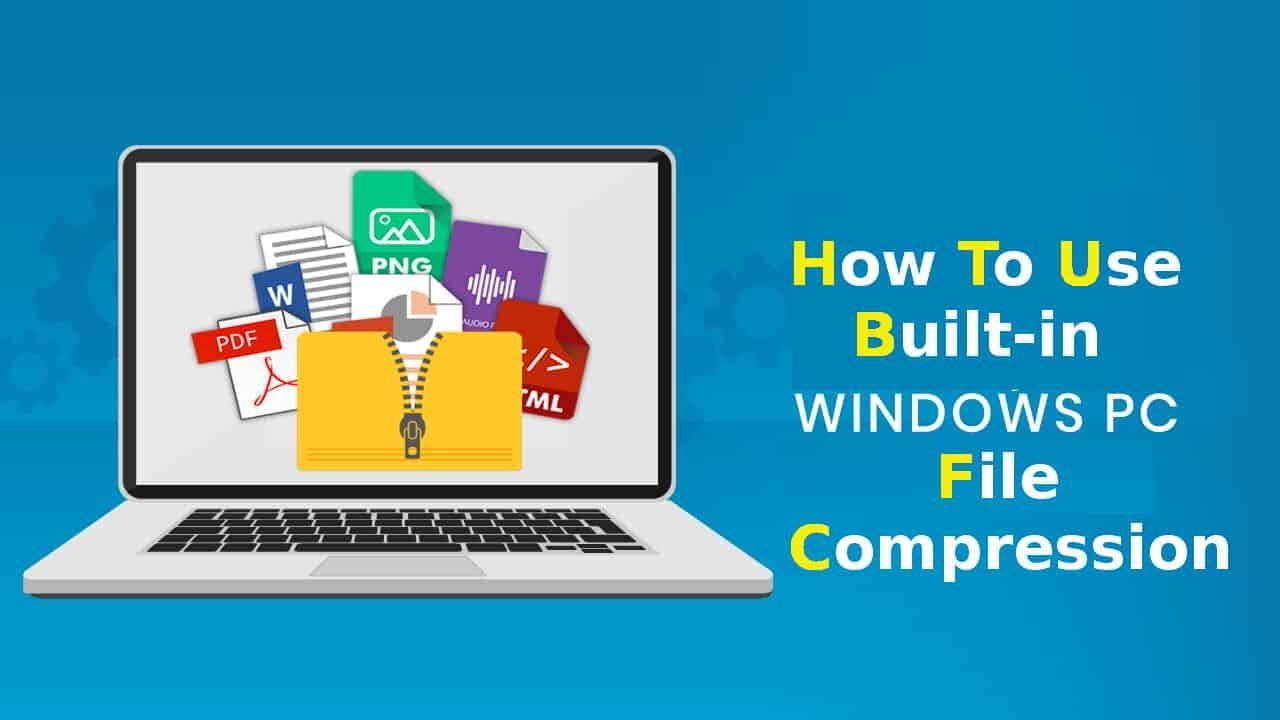Windows OS has a built-in file compression program did you know about that?
Windows offers a variety of useful features that people don’t known about and go looking for freeware programs to perform simple tasks. Once we are going to talk about in this article is File Compression.
What is file compression?
For those who don’t know what is file compression, they should know that it is way reducing the size of any file folder without losing the content. You can just compress any file to easily transfer. It is most used for emailing purposes. But it is also used to share big files by reducing their size. It is also used to bundled a folder full of different files, make them one and share them.
What is compressed files on computer?
A compressed file is like any other but it contains multiple files or directory which are combined together to reduce size of original file size. These files are easy to download, copy or move and even store on a external USB due to smaller file size. Some of the most common example of compressed file extensions are .RAR, .ZIP, .ARJ, .TGZ, TAR.GZ, and etc.

Do compressed files lose quality?
No, compressed files do not lose quality. Think of it like picking multiple item and putting them into a bag then close the bag. In this way it is easy to carry all those item that you would probably have to carry separately. Now when you need any of the item, you can open the bag and use. So does the compression works. You can compress files and then decompress them any time.
When should you compress files?
Use of file compression are going shorter and shorter these days. Earlier when we didn’t have technology of thumb drive which can store large amount data (we had to use floppy disk). File compression was in fashion those day. But still today we use compression for emails, or big files transfers. File compression is also often a used for sending or sharing large documents because email attachments still have size limits.
How do you compress files on Windows 10?
Compressing a fie is not too big a task. You can find lots of free and paid tools for file compression. WinZip, 7-Zip, WinRAR, PeaZip, Express Zip are some of the most commonly used tools. These programs are paid so most people search Internet for free or cracked version. This kind of activities may bring harmful threats and viruses on the users’ computer.
Windows OS offers free file compression
Actually, Windows OS offers a pretty good compression software of its own. Its easy to use, safe and also completely free of cost. It’s an open type of compression service that compress your files but when users tries to open the file, it automatically get decompressed. So, it work as a smart compression through which your files consume less space and you don’t even notice any change.
So, in my personal opinion it is the best way save space on your computer. If you are using an old PC or system is slow then you can use this Windows built-in file compression feature to enhance your computer speed.
File compression and decompression is automatic, it does not mean you cannot identify the zipped files. Compressed files on your system has a zipper over the folder icon.
So, now here is the step-by-step guide to use Windows built-in file compression feature.
How to compress a file using built-in file compression in Windows OS
- First of all open you File Explorer.
- Go to any folder of your choosing.
- Select multiple files of any type you want to compress.
- Make a right click on file(s) or folder(s) you want to zip.
- In context menu, click on “Send to then select Compressed (zipped folder)”.
Viola! You are done. This simple process will compress all your selected file(s) or folder(s) into a new (.zip) file in the very same folder.
Unzip files in Windows OS
- Select the .zip file you want to unzip and right click on it.
- Now click on “Extract All” option from context menu.
- A new windows “Extract Compressed (Zipped) Folders” dialog will appear on your screen.
- Enter or browse folder path where you want to extract zipped file.
- Check “Show extracted files when complete” checkbox to open folder after extraction.
- Finally click on “Extract” button to start the extraction.
Now you finally known how to compress and decompress files on your PC using Windows built-in file compression program. You don’t need any paid tool to do that. So don’t go looking for any cracked software as it can bring malware on your system.
If you still feel need to use a professional file compression utility to compress huge file with great compression ratio then purchase it legally. Shareware, freeware or cracked programs are often used by hackers to distribute malware.
Hope you liked this guide and you will share this post with your loved ones. Heed our suggestions and avoid using pirated software to keep your PC safe.



Leave a Comment